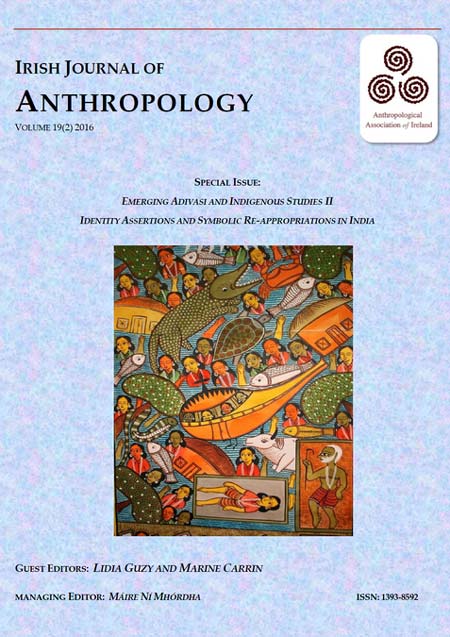
Source: Irish Journal of Anthropology, Vol. 19(2) 2016 Autumn/Winter
EDITORIAL NOTE, LIDIA GUZY, MARINE CARRIN, HARALD TAMBS-LYCHE
https://www.anthropologyireland.org/images/2016_2/2016_2_1_Editorial%20Note.pdf
Accessed: 17-12-17
To read or download the full issue, click here >>
Exploitation, land rights, and identity assertion
Since the colonial period the question of land-rights has been crucial for Indian Adivasis. Attempts to regain lost lands have provoked successive rebellions from 1832 to 1905. Stressing that these forms of resistance and rebellion, as alternative forms of identity assertion, must be ‘understood and analysed on the basis of the specific histories of individual communities,’ Sanjukta Das Gupta deals with the agrarian claims and insurrections of the Ho of Chotanagpur, as well as with the legal frameworks imposed by the British. She argues that the Chotanagpur Tenancy act intended to protect Adivasi land tenures produced different results for the various indigenous groups of the area. Unlike the Munda and Santal, who continued to lose land, the Ho, with their internal stratification and strong leadership, succeeded in negotiating a settlement through redefining their past, reshaping their identity, and developing a subaltern agency which allowed them to retain most of their land as well as their social organisation and polity.
Source: Irish Journal of Anthropology, Vol. 19(2) 2016 Autumn/Winter
EDITORIAL NOTE, LIDIA GUZY, MARINE CARRIN, HARALD TAMBS-LYCHE
https://www.anthropologyireland.org/images/2016_2/2016_2_1_Editorial%20Note.pdf
Accessed: 17-12-17
Tips for using interactive maps
Toggle to normal view (from reader view) should the interactive map not be displayed by your tablet, smartphone or pc browser
For details and hyperlinks click on the rectangular button (left on the map’s header)
Scroll and click on one of the markers for information of special interest
Explore India’s tribal cultural heritage with the help of another interactive map >>